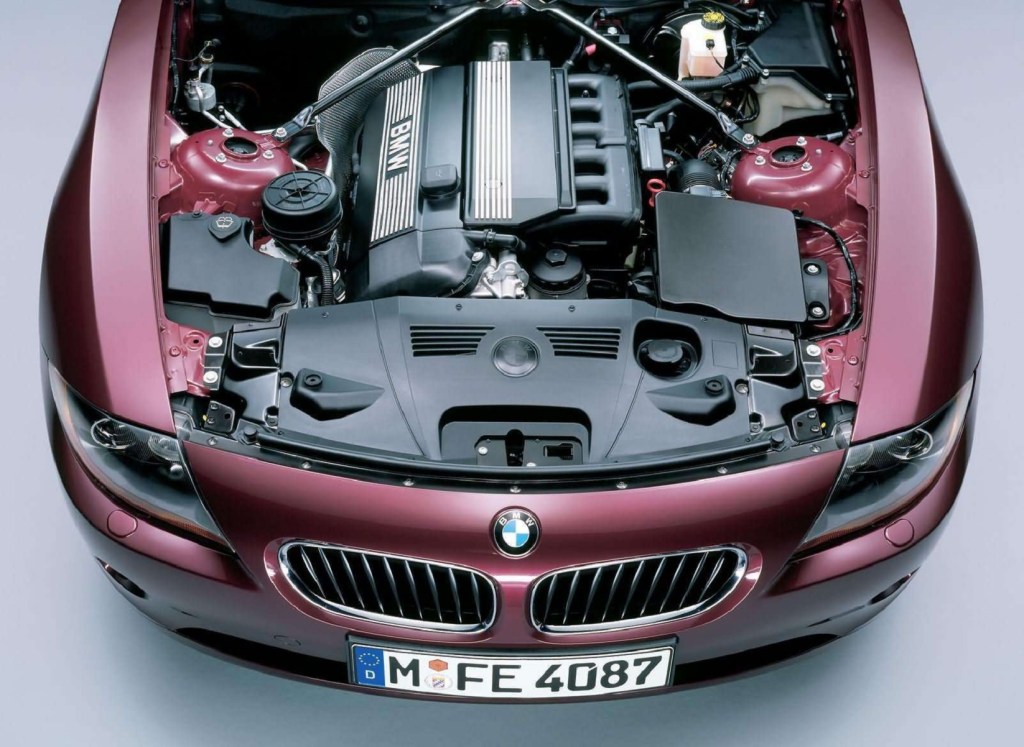Why the BMW Engine Is Taken Into Consideration Among the most effective in High-end Cars
Why the BMW Engine Is Taken Into Consideration Among the most effective in High-end Cars
Blog Article
Discovering the Advancement of Burning Engines in Modern Transportation Solutions
As we browse the landscape of modern-day transportation, the evolution of burning engines stands as a testament to human ingenuity and design prowess. The interplay of background, innovation, and environmental problems in shaping the trajectory of combustion engines produces a narrative that is both compelling and insightful.
Early Beginnings of Combustion Engines
How did the principle of combustion engines initial arise in the very early stages of transport advancement? The origins of combustion engines can be traced back to the 17th century when the concepts of internal burning were initial explored.
The innovation moment featured the innovation of the very first effective gasoline-powered engine by Karl Benz in 1885 - bmw engine. This engine paved the way for the advancement of the modern-day auto, transforming transport systems worldwide. Subsequent advancements by Nikolaus Otto and Gottlieb Daimler better improved burning engine technology, bring about the automation of cars and the quick development of the transportation industry
These early combustion engines were defined by their simplicity and effectiveness, laying the foundation for the complex and powerful engines used in modern transportation systems. The advancement of burning engines has actually contributed in forming the means we take a trip and move items, noting a substantial landmark in the history of transport growth.
Shift to Internal Burning Innovation
The transition to inner combustion technology marked an essential shift in the evolution of transportation systems. This shift started in the late 19th century, with developers like Nikolaus Otto and Gottlieb Daimler developing the first effective internal combustion engines. These engines transformed transport by offering a much more effective and effective choice to heavy steam engines and electrical motors.
One of the essential benefits of internal combustion engines was their capability to be scaled down to match automobiles, causing the development of bikes and cars. This shift from cumbersome, stationary engines to portable, mobile ones led the method for the modern transport systems we see today.
The transition to inner combustion modern technology likewise stimulated innovations in fuel modern technology, bring about the advancement of gasoline and diesel as main gas sources for lorries. This shift not just made transport much more available to the masses yet also laid the foundation for the oil and gas market to come to be important to international economic climates.
Influence of Combustion Engines on Transport
The fostering of combustion engines in transportation systems militarized an extensive change in the efficiency and rate of global movement. Combustion engines transformed transport by providing a trustworthy and flexible resource of power this content for different automobiles, including automobiles, ships, vehicles, and airplanes. This technology considerably improved the capability for goods and people to conform cross countries in shorter period, causing raised connection in between areas and countries.
In addition, the prevalent use burning engines has actually had a substantial influence on economic development. The capability to deliver products effectively has actually spurred trade and commerce, allowing businesses to expand their markets and get to consumers worldwide. This has helped with economic growth and globalization, as items can currently be moved much faster and in bigger quantities than in the past.
However, the ecological impact of burning engines can not be neglected. The combustion of nonrenewable fuel sources has brought about air contamination and greenhouse gas discharges, adding to environment change and presenting wellness dangers to populations. bmw engine. Therefore, there is an expanding emphasis on developing different propulsion innovations to reduce these negative results and produce a more sustainable future for transportation
Developments in Burning Engine Style
One noteworthy advancement is the advancement of turbocharged engines, which utilize exhaust gases to drive a wind turbine that compresses incoming air, allowing for more fuel to be burnt, resulting in increased power output without a significant increase in engine dimension. Variable shutoff timing systems have actually likewise reinvented engine style by optimizing airflow at various engine rates, boosting both power and effectiveness. These advancements collectively contribute to the continual renovation of combustion engines in modern transportation systems.
Future Fads in Burning Engine Advancement
With innovation innovations driving continuous technology, the future of combustion engine growth is positioned to transform transport systems globally. One of the crucial trends in combustion engine growth is the push in the direction of better effectiveness and lowered emissions.
One more prominent fad is the adoption of crossbreed technologies in combustion engines. Crossbreed engines incorporate conventional burning modern technology with electric power, providing improved gas performance and lower emissions. As the vehicle sector shifts towards electrification, hybrid burning engines are viewed as a transitional solution that bridges the space between standard vehicles and fully electric ones.
Additionally, the assimilation of clever technologies, such as synthetic intelligence and data analytics, is expected to play a substantial duty in the future of burning engine development. These technologies can optimize engine performance over here in real-time, resulting in a find more info lot more effective burning procedures and improved general automobile efficiency. Accepting these future trends will not only drive innovation in combustion engine development but additionally add to an extra eco friendly and sustainable transport environment.

Final Thought
In final thought, the evolution of burning engines in modern-day transportation systems has been noted by considerable improvements in innovation and design. From the very early starts of combustion engines to the change to inner combustion technology, these engines have actually had a profound impact on transport.
The roots of combustion engines can be traced back to the 17th century when the concepts of internal burning were first discovered. These engines revolutionized transportation by offering an extra powerful and efficient choice to heavy steam engines and electric motors.

Report this page